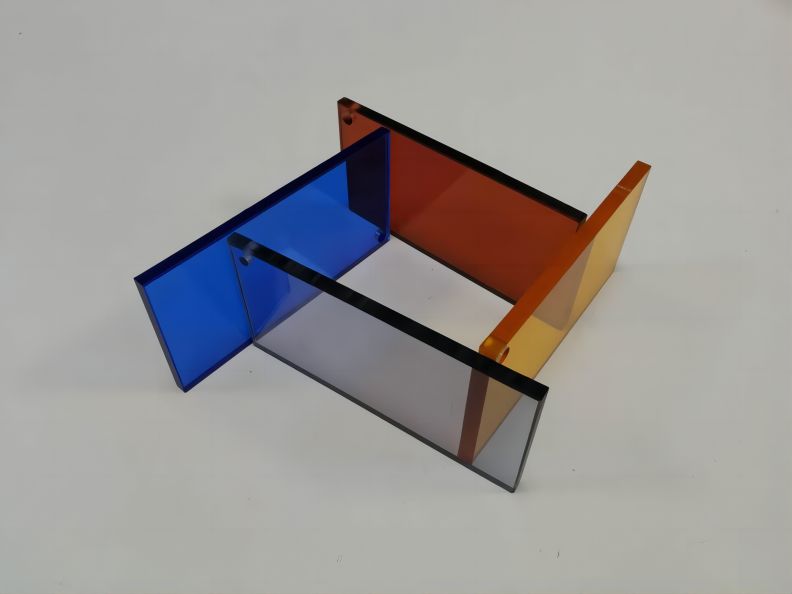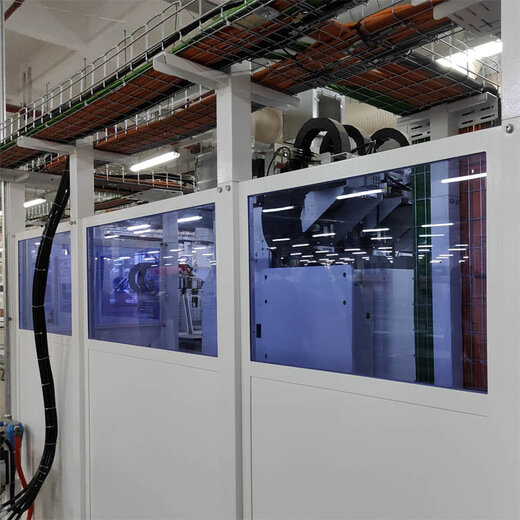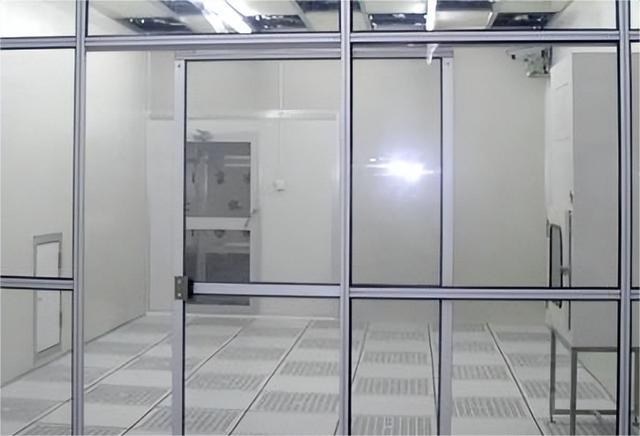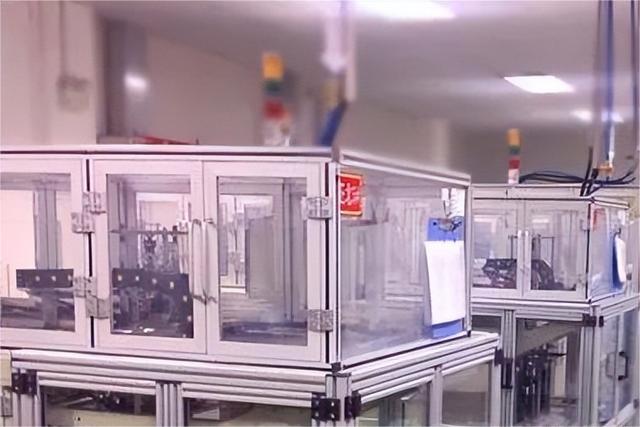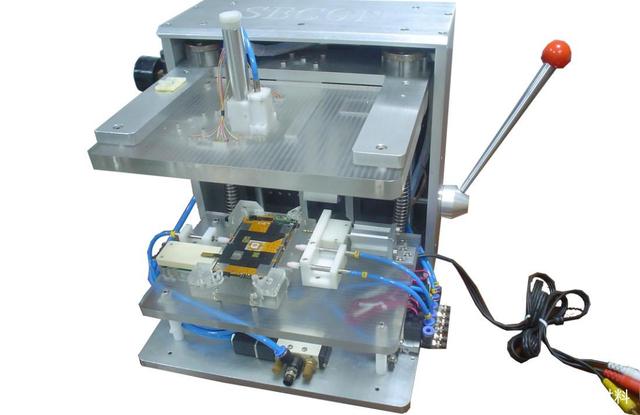Since the industrialization of lithium-ion batteries in 1991, the anode material of batteries has been dominated by graphite. Lithium titanate, a negative electrode material for new lithium-ion batteries, was valued in the late 1990s due to its many excellent properties. For example, lithium titanate materials can maintain high stability in crystal structure during lithium ion implantation and deintercalation, and the lattice constant changes little (volume change) This "zero strain" electrode material greatly extends the cycle life of lithium titanate batteries. Lithium titanate has a three-dimensional lithium ion diffusion channel unique to the spinel structure, and has excellent power characteristics and high low temperature performance. Compared with the carbon negative electrode material, the lithium titanate has a high potential (1.55 V higher than the potential of the metal lithium), which causes the solid-liquid layer usually grown on the surface of the electrolyte and the carbon negative electrode to be substantially not formed on the surface of the lithium titanate. . More importantly, lithium dendrites are difficult to form on the surface of lithium titanate in the voltage range used by normal batteries. This largely eliminates the possibility of lithium dendrites forming a short circuit inside the battery. Therefore, the safety of lithium ion batteries with lithium titanate as the negative electrode is the safest among the various types of lithium ion batteries that I have seen so far. Most people in the industry have heard that the lithium battery cycle life of lithium titanate instead of graphite as a lithium battery anode material can reach tens of thousands of times, much higher than the common traditional lithium ion battery, and only a few thousand cycles will end. Since most professional lithium battery people have never really made a lithium titanate battery product, or just have encountered several difficulties, they will end up in a hurry. So they didn't calm down and think about it. Why do most of the traditional lithium-ion batteries that make perfection usually only have 1000-2000 charge and discharge cycles? Is the root cause of the short cycle life of the traditional lithium-ion battery derived from one of the basic components - the graphite anode is overwhelmed? Once the graphite anode is replaced with a spinel-type lithium titanate anode, substantially the same lithium-ion battery chemistry can be cycled to tens of thousands or even hundreds of thousands of times. In addition, when many people talk about the low energy density of lithium titanate batteries, they ignore a simple and important fact: that is, lithium titanate battery has a long cycle life, extraordinary safety, excellent Power characteristics and good economy. These characteristics will be an important cornerstone for the current large-scale lithium-ion energy storage industry. In the past 10 years, the research on lithium titanate battery technology at home and abroad can be described as turbulent. Its industrial chain can be divided into lithium titanate material preparation, lithium titanate battery production and lithium titanate battery system integration and its application in the electric vehicle and energy storage market. Lithium titanate material Internationally, lithium titanate materials research and industrialization are leading in the United States, including Austrian Titanium Nanotechnology Co., Ltd., Japan Ishihara Industry Co., Ltd., and Johnson Matthey. Among them, the lithium titanate material produced by American Titanium has excellent performance in terms of rate, safety, long life and high and low temperature. However, due to the excessively long and detailed production methods, the production cost is too high, making it difficult to commercialize. Ishihara Industry is one of the largest manufacturers of titanium dioxide in Asia. The company has production bases in Japan, Singapore and Taiwan. The Ishihara industry has fully utilized its abundant raw material resources to successfully develop a variety of low-cost, high-rate, and different-grain lithium titanate products by wet process. Products with similar performance have a greater advantage in comparing the price of lithium titanate materials in the United States, but they are slightly inferior to those in China. Johnson Matthey took over the lithium iron phosphate and other materials owned by the former German Southern Chemical Company, but the investment in the research and development and production of lithium titanate materials was insufficient, and the product quality was difficult to stabilize. There are many domestic production of lithium titanate materials, such as Sichuan Xingneng New Materials Co., Ltd., Zhuhai Yinlong New Energy Co., Ltd., Huzhou Weihong Power Co., Ltd., Shenzhen Beit Rui New Energy Materials Co., Ltd., Hunan Shanshan New Materials Co., Ltd. and a number of smaller lithium titanate manufacturers around Anhui and Shenzhen. Sichuan Xingneng is a professional manufacturer of lithium titanate materials with an annual production capacity of 3000t. The lithium titanate production process has customer adaptability and stability, and can be flexibly adjusted without changing existing production lines and equipment. Lithium titanate required by different customers, and maintain the stability of product specifications. Xingneng can rely on the upstream lithium ore and titanium resources to achieve synergistic production from raw ore to final materials, thereby realizing the performance improvement and cost reduction of lithium titanate products and avoiding the impact of raw material market fluctuations. In 2011, Zhuhai Yinlong completed the acquisition of a 53.6% stake in American Titanium Nanotechnology Co., Ltd., which became a rare domestic lithium titanate material preparation, battery production, lithium titanate electric vehicle, energy storage system, FM A number of core technologies and more than 30 patents for applications such as peak shaving. At present, the annual production capacity of lithium titanate materials of North Austrian Titanium Nanotechnology Co., Ltd. (referred to as “Northern Austrian Titaniumâ€) is 100t and provides high quality nanometer lithium titanate for North Austrian Titanium and Zhuhai Yinlong. Zhuhai Yinlong New Energy has also carried out strategic cooperation with Ishihara Industry on the research and development of new lithium titanate materials. The cost of materials will decrease with the increase of its output. It is expected to be close to the current cost price of graphite anode materials in the next few years. Huzhou Weihong is one of the most successful companies in the domestic industry to promote lithium titanate battery technology and other fast-charge batteries. The lithium titanate material produced by Huzhou Weihong is mainly used in its own lithium titanate battery products. The expansion of Huzhou Weihong lithium titanate battery products in the domestic and international markets has also played a good role in demonstrating the application of lithium titanate technology in the electric vehicle and energy storage markets. Shenzhen Betray is currently the world's largest supplier of lithium battery negative electrodes. The company has a strong R&D team and is one of the drafters of the lithium titanate industry standard. Shenzhen Beitray's strong sales network will also take the lead in the sales of lithium titanate market, and has launched two products of carbon-coated lithium titanate and carbon-free coated lithium titanate. However, the current lithium titanate material is not the main product of Betray. In the case that the lithium titanate battery market has not been fully rolled out, the company has not yet formulated a long-term plan for the production of lithium titanate materials. 2. Lithium titanate battery and its application in electric vehicles and energy storage There are not many manufacturers that can mass produce lithium titanate batteries in the world, mainly represented by American Ao Ti and Japan Toshiba Group. The application market for lithium titanate batteries mainly includes electric vehicles, energy storage markets and industrial applications. The United States titanium titanium lithium titanate battery manufacturing has its own unique core technology, is still in the leading position in the international large-scale lithium titanate battery manufacturing, and has solved the so-called "flatulence" problem. At present, its 4th generation 65Ah single lithium titanate battery has been used in energy storage systems, and there is still no significant capacity attenuation after 10,000 cycles at 65 °C. In the application of lithium titanate battery system, Altitan's hybrid electric bus for California has been put into operation in 2008. Its fuel economy index is 106.4kg / L is much higher than the ordinary diesel generator 23.8kg / L. The company provides a 1MW storage system for the 10.5MW wind farm of the Hawaii Natural Energy Institute and is connected to the local grid, providing a three-year technical support service. The lithium titanate battery energy storage system is mainly used to regulate the voltage fluctuation of renewable energy, and the load change rate of the unit is controlled within 1 MW/min. Ao Ti's 1MW high-capacity high-power energy storage unit is the only large-capacity lithium titanate battery product that has been approved by the US power grid for more than 2 years in the field for commercial operation and performance quality inspection. The number of cycles of the energy storage system exceeds 500,000 times, the total charge and discharge capacity exceeds 3,300 MWh, the system capacity loss is less than 2%, and the power has no significant attenuation. Japan's Toshiba mass-produces lithium titanate batteries under the brand name "SCiB". Among them, 3.2Ah, 10Ah and 20Ah aluminum shell square batteries are mainly used for electric motorcycles, electric vehicles and car start-stop batteries. SCiB battery has the advantages of fast charging and long life. It can charge more than 90% in 10 minutes, and the battery capacity is reduced by less than 10% after repeated charge and discharge 3000 times. It has been applied to "EV-neo" electric motorcycles in batches. In terms of energy storage, Toshiba is using the new solar radiation program in Japan to apply lithium titanate batteries to large-scale energy storage power stations and household energy storage systems. Another Japanese company, Murata, has developed a new lithium titanate battery using 5V lithium nickel manganate as its positive electrode. The voltage difference is 3.2V, and the energy density can reach 130Wh/K song, which exceeds the current level of lithium iron phosphate battery. There are many domestic lithium titanate battery production, such as Huzhou Weihong, Zhuhai Yinlong, Shenzhen Boleida, Tianjin Jiewei Power Industry Co., Ltd., Sichuan Xingneng, CITIC Guoan Meng Gu Li Power Technology Co., Ltd. Hunan Shanshan and a number of smaller lithium titanate battery manufacturers around Anhui and Shenzhen. Since its establishment in 2006, Huzhou Weihong has been committed to the development of lithium titanate technology. The company vertically integrated lithium titanate materials, separators, electrolytes and cathode materials required for the production of lithium titanate batteries. In recent years, in order to meet the market demand, Huzhou Weihong has the capacity of Nissan's 80,000 10Ah lithium titanate battery products and twice the capacity of the multi-positive lithium battery products of lithium titanate batteries. As of the end of 2014, Huzhou Weihong's 10-minute fast-charging battery system has been equipped with more than 3,000 hybrid electric buses, mainly sold to the UK, the Netherlands and Chongqing, China. In the energy storage market, Huzhou Weihong installed lithium titanate battery energy storage systems for grid frequency regulation and grid demand management in Vermont, USA and Chongqing, China. Zhuhai Yinlong currently produces lithium titanate battery products with 20Ah and 65Ah soft pack batteries and 25Ah, 30Ah and 55Ah cylindrical batteries. The performance index has reached the lithium titanate battery produced by American Titanium. The battery has 100% DOD cycles of more than 16,000 cycles and 10% DOD has reached 1.6 million cycles. These batteries have been tested by third parties of the North Auto Quality Supervision and Inspection Laboratory (201). In terms of application, Yinlong's new pure electric bus uses a lithium titanate battery with a cylindrical shape, long life and fast charge and discharge. The cruising range can reach 30-80km, fast charging takes only 6-10 minutes, and nighttime valley electricity can also be used. Slow charging is full for 30 to 60 minutes. This series of models has been successfully put into the public transportation system in Zhanjiang, Hebei, Shijiazhuang and other places in Guangdong. The antique car designed and developed by Yinlong for Beijing Public Transport was put into commercial operation in September 2014. The car was also designated as the official designated car for the Beijing APEC meeting. In the energy storage market, Yinlong cooperated with State Grid and China Southern Power Grid to undertake the 863 national project for energy storage, providing two 2MWh and one for Zhangbei Fengshui Storage and Depot Station and Shenzhen Baoqing Battery Energy Storage Station respectively. Part of the module, battery box design and system solution for the 600kWh lithium titanate system. Shenzhen Boleida can produce Li4Ti5O12 material with good performance through unique material processing methods, and through the technical research project, from the improvement of the production process of lithium titanate battery, the design and preparation of high-performance Li4Ti5O12 has made significant progress. The mass-produced products have 17Ah, 20Ah and 25Ah cylindrical batteries, which solves the problem of easy gassing of lithium titanate batteries, obtains high-performance lithium titanate battery products, and has obtained an authoritative third-party test report. Boleida started from the design of high-power Li4Ti5O12 electrode material, and studied the side reaction of Li4Ti5O12 material to reveal the gas production mechanism and solution mechanism. The large-scale application of Li4Ti5O12 electrode material in power battery has made a major breakthrough. Tianjin Jiewei has obtained the transfer technology of the production of lithium titanate battery from American Titanium, and combined with its own technical accumulation in the production of polymer soft pack power battery for many years. The company successfully broke through the problem of flatulence, and has the technology and ability to mass produce large-size monomer lithium titanate battery. The battery capacity reaches 60Ah, and the cumulative shipment is 20 million Ah. The battery can withstand more than 10C continuous charge and discharge, life expectancy of more than 20,000 times, temperature range of -40 ~ 60 ° C, mainly used in fast charge bus and FM energy storage power station. Difficulties in the development of lithium titanate battery technology and its development direction 1. Reasons for developing lithium titanate battery technology in China The competition of lithium titanate battery technology in various energy storage batteries in China should occupy the advantages of time, location and people. In terms of service life, lithium titanate battery has a much longer cycle life than various lead-acid batteries; its efficiency, cost and electrochemical performance are superior to those of sodium sulfur and liquid vanadium. The main markets for lithium battery products over the years have been portable appliances such as mobile phones and laptops. Although the use of mobile phones and laptops in China is large, most of them are not domestic brands. Therefore, domestic lithium battery manufacturers have lost their lithium battery sales capacity on portable appliances to Japanese and Korean products. However, the market for lithium titanate technology is hybrid electric vehicles, special industrial applications and energy storage applications such as frequency modulation and grid voltage support. These markets are still in their infancy in the world, and it is not known who is in the ears. Lithium titanate technology is expected to be a leader in these markets. China's population base accounts for about one-fifth of the world's total. Due to its large population, China's electric vehicle, energy storage and industrial application market is a huge market that is coveted by multinational companies in many countries. In recent years, the Chinese government has attached great importance to the development of electric vehicles and energy storage industries, and various national incentive policies have been introduced. China's lithium titanate battery system has accumulated commercial application data for several years in hybrid electric buses in Chongqing and Europe, Fengguang storage demonstration station in Zhangbei and Shenzhen Baoqing energy storage power station. In addition, the upstream and downstream of China's lithium battery industry chain has already become a climate. In addition to the complete battery material supply and equipment manufacturing capabilities, the production capacity of lithium battery products is also in line with Japan and South Korea. This makes China's lithium battery manufacturers have the innate conditions for the transformation from traditional lithium battery production to lithium titanate battery production. China has already had the strength and experience of enterprises such as Sichuan Xingneng, Zhuhai Yinlong and Huzhou Weihong in the production of lithium titanate materials. Representative enterprises that stand out in the production of lithium titanate batteries include Huzhou Weihong, Zhuhai Yinlong, Shenzhen Boleida, and Tianjin Jiewei. These companies have already established their own sales channels in the domestic and international electric vehicles and energy storage markets. In particular, it is worth noting that Shenzhen Boleida has a series of proprietary technologies and intellectual property rights from material production to battery manufacturing and system integration. At present, China's lithium battery industry is still a rare manufacturer with independent intellectual property rights. 2. Bottlenecks in lithium titanate materials, batteries and battery packs Since lithium titanate battery technology has many advantages that other lithium batteries cannot match, why have it been applied in China's energy industry and even the world energy field so far? There are three reasons for this: The production of lithium titanate material by lithium titanate material is not complicated in principle. However, to be used as a negative electrode material for lithium ion batteries, it is necessary not only to have a suitable specific surface area, particle size, density, and electrochemical performance, but also to be suitable for a large-scale lithium battery production process. One of the reasons why lithium titanate materials cannot be produced normally on many conventional lithium battery production lines is that the material has a pH of 11 or 12 and is extremely hygroscopic. 2 Lithium Titanate Battery Fabrication In fact, the direct use of a conventional lithium-ion battery production line for the production of lithium titanate battery products is not as simple as replacing graphite with lithium titanate. Because the lithium titanate material requires much higher humidity than conventional lithium ion batteries. In order to control the humidity, some preparation processes need to be adjusted accordingly to meet the special requirements of the production of lithium titanate battery products. In addition, some production equipment also needs to be improved accordingly. If possible, it is best to redesign a compact, compact, fully enclosed automated production line specifically for lithium titanate battery products. 3 Lithium titanate battery pack is different from conventional lithium ion battery. At present, lithium titanate batteries produced at home and abroad are often used in groups for a period of time, and often a small amount of gas is generated in the single cell of the soft pack. These gases are different from the gases produced when fresh batteries are formed. The former can be removed by a battery production process. However, the latter is produced during the use of the battery, or it is difficult to avoid under current process conditions. The author believes that the study of the chemical reaction mechanism of gas generated during the cycle should be a good research topic. In addition, one of the advantages of lithium titanate battery technology is its high power performance. Although the battery itself can withstand high current charge and discharge, thick single cells are still not suitable for high power applications because the battery is too thick and the heat generated by large currents is difficult to dissipate. Therefore, for high-power lithium titanate batteries, the size and thickness of the soft-pack battery structure is still a reasonable choice. 3. Future development direction of lithium titanate technology Finally, it is necessary to comprehensively summarize the advantages and disadvantages of lithium titanate materials as lithium negative electrodes. Advantages: ultra-high safety, long life, high and low temperature working range, high power, low cost and green environmental protection. Disadvantages: Lithium titanate materials have low energy density, strong water absorption, high environmental requirements for battery manufacturing, and correspondingly updated production processes. New processes require investment in necessary equipment and higher humidity control, and lithium titanate batteries. The application market has not been fully opened. Conclusion In the current environment of the Chinese government's vigorous promotion of new energy and related industries, how to promote lithium titanate battery technology and its application in the electric vehicle and energy storage market is indispensable to the Chinese lithium titanate battery industry. Time is no longer coming. For domestic Zhuhai Yinlong, Huzhou Weihong, Shenzhen Boleida, Sichuan Xingeng, Shenzhen Beitray and other enterprises with some independent intellectual property rights and sales channels should be a unique opportunity. Many people do not realize that China's intellectual property advantage in lithium titanate technology is not available in the so-called "mainstream chemistry" based on lithium iron phosphate batteries. The development of high-capacity high-potential cathode materials to increase the energy density of lithium titanate batteries is a step in the game. Of course, it is necessary to study the entire lithium-ion battery chemical system, such as high-potential electrolyte and anti-oxidation separator. Efforts to develop lithium titanate battery technology in China's lithium industry will yield considerable returns in the emerging market for electric vehicles, energy storage and industrial applications.
HONYESD®Esd Antistatic PC Sheet Rod is base material of anti-static PC board is PC, which is a colorless and transparent amorphous thermoplastic material. , that is, a layer of antistatic hard film is formed on the surface of ordinary PC boards by plating technology. On the basis of perfectly retaining the inherent physical properties of the substrate, it also has an excellent function of eliminating static electricity. The surface resistance value is in 106 to 108 ohms is the best state of anti-static function, which can effectively prevent the accumulation of dust and avoid the possible harm caused by static electricity, so as to meet the special requirements of the industry in the high-tech era.
HONYESD®Esd Antistatic PC Polycarbonate sheet clear plastics sheet
1.22 g/cm
Clear, other color can be customized
The surface resistance value
10^6-10^9 Ω
The flame retardant rating
UL-94: V-0 ~ V-2
HONYESD®Esd Antistatic Pc Sheet Rod characteristic
The anti-static PC board is characterized by strong impact resistance and high temperature resistance of 120 degrees Celsius. The PC board has excellent flame retardancy and fire resistance (the flame retardant grade is UL-94 V-0 V-2, and the thickness is more than 6mm. The grade can reach V-0, the light transmittance is 83%, the anti-static PC board is manufactured by extrusion method, and the thickness tolerance is generally 3-5 wires; it has the characteristics of high mechanical strength and excellent processing performance.Super impact resistance and high temperature resistance are outstanding, and the surface resistance value is 106 to 108 ohms .
The manufacturing process of anti-static PC board is extrusion method, and the thickness tolerance is generally 3-5 wires. Through special processing technology, on the basis of perfectly retaining the inherent physical properties of the substrate, it also has an excellent function of eliminating static electricity, which can effectively prevent the accumulation of dust and avoid the possible harm caused by static electricity, so as to meet the needs of the high-tech era The special needs of the industry.
The plate has the characteristics of high mechanical strength and excellent processing performance. The antistatic performance can be tested by using professional instruments: â‘ surface resistance tester to detect the surface electrostatic effect of the plate; Above 100V, it is not a qualified anti-static product.
Properties of Permanent Antistatic/Conductive Sheets:
With the rapid development of the electronics industry, the integration of electronic circuit boards is getting higher and higher. The high density of electronic components on the motherboard, the compact wiring, and even the widespread use of surface mount components can easily lead to electrostatic damage to electronic components. Using PC antistatic transparent sheet to make applications can reduce the electrostatic damage caused by many equipment/buildings, which is full of safety.
HONYESD®Esd Antistatic Pc Case
1.Clean room partition Anti-static partition can effectively prevent dust adsorption and static voltage generation in the clean room.
2.Precision equipment cover In order to ensure the normal operation of automation equipment without causing harm to surrounding personnel, it also plays a role in dust-proof equipment.
3.The test fixture avoids the deviation caused by static electricity to the greatest extent, which will affect the test data.
Esd Polycarbonate Pc Sheet,Esd Antistatic Pc Sheet,Polycarbonate antistatic sheet,PC-300â„¢ ESd Polycarbonate Hony Engineering Plastics Co.,Ltd. , https://www.honyplastic.com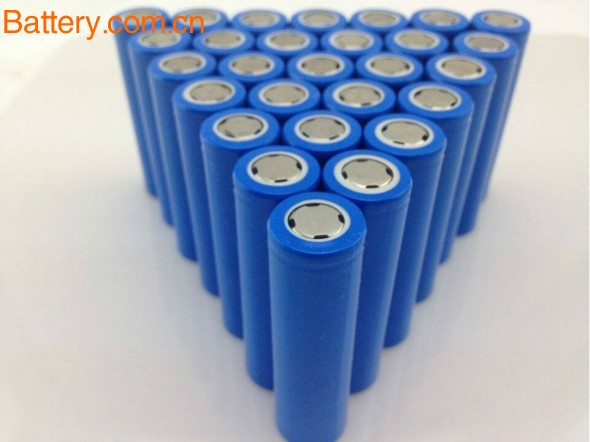
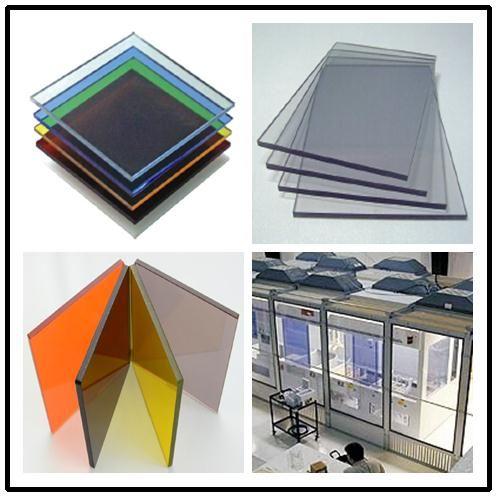
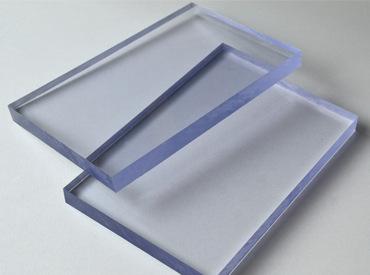
Name
Brand
HONYESD
Size
Thickness 2-100mm 1000x2000mm 1200x2400mm 1212x2424mm
Density
Color
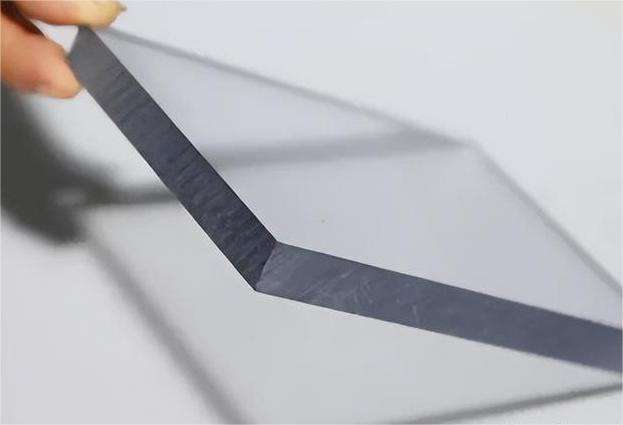
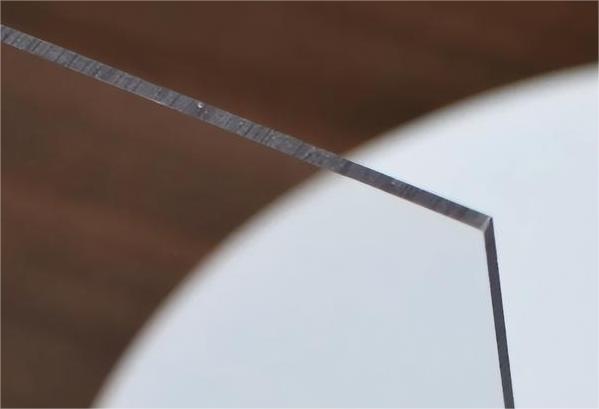
(1) It does not depend on humidity and can ensure the effectiveness of use under harsh conditions;
(2) Excellent light transmission performance, no migration, no pollution to the environment;
(3) Can be black ≤ 106Ω/m, can be light-colored or transparent ≤ 109Ω/m;
(4) Excellent surface hardness and corrosion resistance to chemical solvents, and can be wiped with alcohol;
(5) No dust and particle pollution, suitable for electronics, gas and liquid industries;
(6) Form a conductive interpenetrating network, conduct static electricity quickly, and do not affect material properties;
(7) Excellent coating durability, high mechanical strength, and excellent processing performance.
